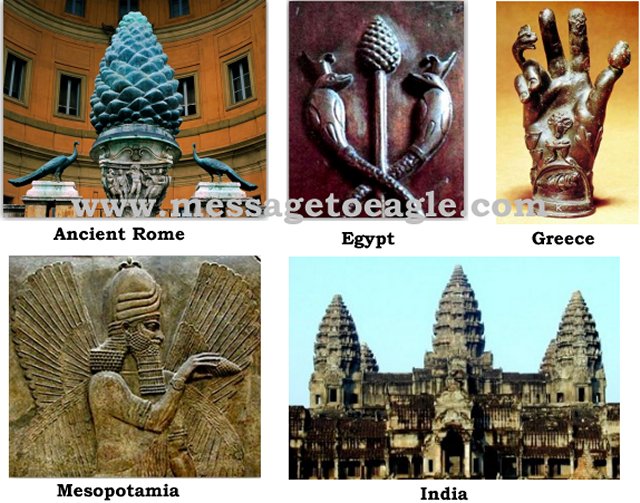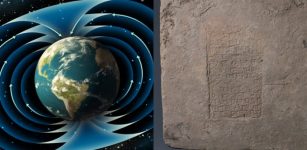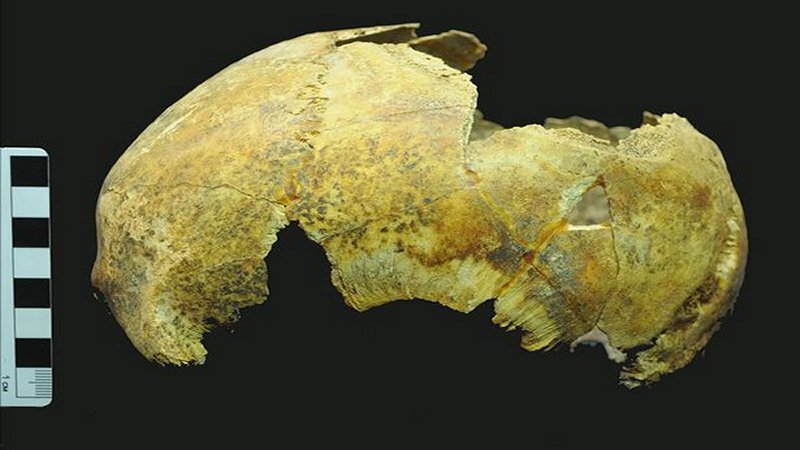10 Remarkable Similarities Between Ancient Civilizations
Ellen Lloyd – MessageToEagle.com – There are many reasons why ancient history should be re-written.
In this top list, we display ten remarkable similarities that clearly offer proof prehistoric civilizations shared a universal scientific and technological knowledge.
Mystery Of Ancient Metal Clamps – Advanced Lost Technology Modern Science Still Cannot Explain
Ancient metal clamps discovered on megaliths, temples, and other prehistoric monuments worldwide are one of the greatest unsolved ancient mysteries of all time. Why would the builders use or need a small metal clamp to hold large stone blocks in place? How did this technology spread to ancient Egypt, Pre-Columbian Peru, and Cambodia thousands of years ago? These countries are separated by thousands of miles. Who taught our ancestors how to use this technology?
The use of metal clamps in T-Grooves has been discovered in Tiahuanaco, Ollantaytambo, Koricancha, and the site of Yuroc Rumi, Vilcabamba. These clamps were also used on the Parthenon, on buildings in Mesopotamia, Egypt and Cambodia.
Some scientists have suggested the clamps were for ceremonial use. Other researchers point out that ancient metal clamps served for keeping the blocks together, so they would harden out in the right position. Several imprints show that metal clamps intended to join huge blocks of stone that our modern machines cannot lift.
2. Pyramids Were Built For Unknown Purpose That We Are Not Able To Explain
Most people think of Egypt when the word “pyramid” is mentioned. Although the Egyptian pyramids are today most well-known and keep attracting tourists, we must not forget that pyramids were built worldwide in ancient times.
Despite the claim that the pyramid was a tomb, a number of Egyptologists do recognize that the intent of the pyramid still remains a mystery. Some of the investigated pyramids are astronomically aligned, while others reveal strange energy properties. The truth is that the purpose of constructing pyramids is still unknown.
3. Striking Similarity Between Ancient Dolmens World-Wide
These ancient dolmens are yet another great example of ancient universal thinking. It is obvious the ancient traditions were the same despite the vast distance separating these cultures. Let us also keep in mind that the builders of the dolmens were unrelated to each other. Intriguing, isn’t it?
A dolmen, also known as a cromlech, portal tomb, portal grave or quoit, is a type of single-chamber megalithic tomb, usually consisting of two or more upright stones supporting a large flat horizontal capstone (table), although there are also more complex variants. It remains unclear when, why, and by whom the earliest dolmens were made.
4. Mystery Of The Hand Motif In Prehistoric Rock Art Across The World
Hand paintings are depicted in rock art around the world. The hand image would have been created in a variety of ways: the artist may have used the hand on the rock as a stencil, spraying paint from the mouth or charcoal powder through a reed; the outline of the hand may have been painted around by brush; or simply painting the hand and then placing it on the rock. These hand paintings were created by men, women, and children.
Whatever the method, and whatever the style of accompanying art, hand paintings are one of the most common elements of rock art.
5. Hidden Ancient Secrets Of The Swastika Symbol Used World-Wide

The swastika is a powerful ancient symbol that today is mostly associated with Nazi Germany. However, it’s true origins stretch far back in time.
Swastikas have been found on ruins across ancient Europe. All ancient European cultures-i.e., the Etruscans, Greeks, Romans, Gauls, Celts, etc. – practiced the same high spiritual religion of Hinduism, from where the swastika symbol originated.
6. The Sphinx Played An Important Role In the Ancient World
 An idol with a human head and a lion’s body known as sphinx is one of the most important symbols in humanity’s records. It’s a keeper of the holy places and the mysteries of life, and a guardian of knowledge and symbol of riddles and intrigue. It is a creature full of secrets – a mystery of Nature.
An idol with a human head and a lion’s body known as sphinx is one of the most important symbols in humanity’s records. It’s a keeper of the holy places and the mysteries of life, and a guardian of knowledge and symbol of riddles and intrigue. It is a creature full of secrets – a mystery of Nature.
It has deep connections with the ancient civilizations of Greece and Egypt. According to a legend, the Sphinx dies for the truth, because his perception of the Truth is only one.
The oldest known sphinx was found in Gobekli Tepe, Turkey, and was dated to 9,500 BC. Ancient Egyptian and Babylonian considered the sphinx to be a guardian, often flanking the entrances to sacred royal tombs and religious temples.
7. Ancient Figures Sticking Out Their Tongue
Several ancient figures discovered worldwide are depicted sticking out their tongue. What is the meaning of this symbolism and imagery?
In some countries, it’s a sign of respect, in other parts of the world it is a sign of intimidation against your enemy and denotes strength and fierceness.
8. Ancient Mystery of The Pine Cone Symbol Found Across The World

The pine cone symbol is one of the most mysterious emblems found in ancient and modern art and architecture. Few scholars realize it, but the pine cone alludes to the highest degree of spiritual illumination possible. This was recognized by various ancient cultures, and the symbol can be found in the ruins of the Indonesians, Babylonians, Egyptians, Greeks, Romans, and Christians, to name a few. It also appears in the drawings of esoteric traditions like Freemasonry, Theosophy, Gnosticism, and esoteric Christianity.
The pine cone held the same meaning for all: It symbolized a secret vestigial organ, the “pineal gland” or “Third Eye”, that we all possess.
9. Priests In the Ancient World
Priests in the ancient world played a very important role and have existed since the earliest of times. They were keepers of ancient wisdom. the authority or power to administer religious rites, in particular, rites of sacrifice to, and propitiation of, a deity or deities.
10. Mysterious Spiral Motif
Spirals are found in every ancient culture throughout the world. It remains a mystery why ancient cultures craved into stone the exact same symbol, but it is a good proof of ancient universal knowledge. It is the oldest symbol known to be used in spiritual practices, reflects the universal pattern of growth and evolution. The spiral represents the goddess, the womb, fertility and life force energy. Reflected in the natural world, the Spiral is found in human physiology, plants, minerals, animals, energy patterns, weather, growth, and death.
Written by Ellen Lloyd – MessageToEagle.com
Copyright © MessageToEagle.com All rights reserved. This material may not be published, broadcast, rewritten or redistributed in whole or part without the express written permission of MessageToEagle.com
Related Posts
-
 Silver Needle Dismissed As Trash Was Part Of A Stunning Viking Treasure Found By Farmer On Gotland
No Comments | Nov 17, 2020
Silver Needle Dismissed As Trash Was Part Of A Stunning Viking Treasure Found By Farmer On Gotland
No Comments | Nov 17, 2020 -
 10 Great Ancient Life Lessons From Buddha How To Change Your Life Rapidly
No Comments | Jul 16, 2015
10 Great Ancient Life Lessons From Buddha How To Change Your Life Rapidly
No Comments | Jul 16, 2015 -
 Buhl Woman Of Idaho: One Of The Oldest Skeletons In North America
No Comments | Jun 10, 2023
Buhl Woman Of Idaho: One Of The Oldest Skeletons In North America
No Comments | Jun 10, 2023 -
 Mysterious Anomaly In Earth’s Magnetic Field Documented On 3,000-Year-Old Mesopotamian Bricks
No Comments | Dec 21, 2023
Mysterious Anomaly In Earth’s Magnetic Field Documented On 3,000-Year-Old Mesopotamian Bricks
No Comments | Dec 21, 2023 -
 Robert The Bruce: Mighty King Of Scots And Great Scottish Hero
No Comments | Oct 13, 2016
Robert The Bruce: Mighty King Of Scots And Great Scottish Hero
No Comments | Oct 13, 2016 -
 5,000-Year-Old Russian Skull Offers Evidence Of Brain Surgery Made With Stone Scalpel
No Comments | Oct 23, 2020
5,000-Year-Old Russian Skull Offers Evidence Of Brain Surgery Made With Stone Scalpel
No Comments | Oct 23, 2020 -
 ‘Artificial Trees’ Will Absorb Carbon Dioxide 1,000 Times More Effective Than A Regular Tree
No Comments | Feb 9, 2016
‘Artificial Trees’ Will Absorb Carbon Dioxide 1,000 Times More Effective Than A Regular Tree
No Comments | Feb 9, 2016 -
 London’s Underground Rivers Were Deliberately Hidden
No Comments | Jan 4, 2016
London’s Underground Rivers Were Deliberately Hidden
No Comments | Jan 4, 2016 -
 Messina Cathedral And Its Automated Astronomical Clock Tower
No Comments | Jan 14, 2016
Messina Cathedral And Its Automated Astronomical Clock Tower
No Comments | Jan 14, 2016 -
 Unraveling The Mystery Of Tulpas: Ancient Tibetan Secrets Reveal How To Create A ‘Living’ Thought-Form
No Comments | Nov 8, 2016
Unraveling The Mystery Of Tulpas: Ancient Tibetan Secrets Reveal How To Create A ‘Living’ Thought-Form
No Comments | Nov 8, 2016







